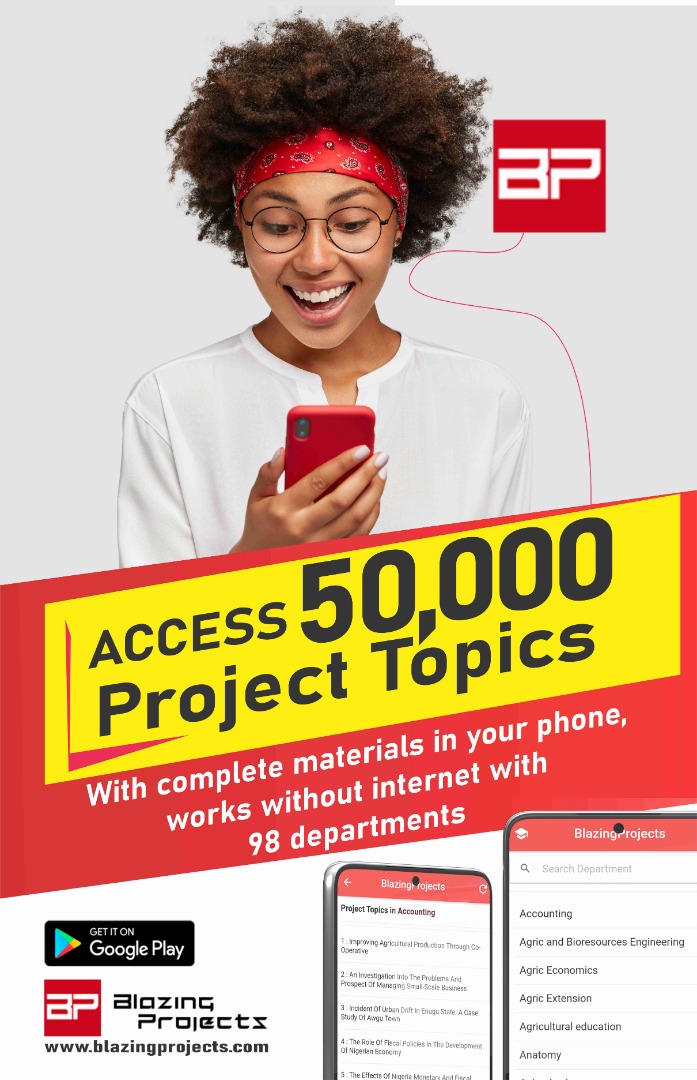[ad_1]
Table of Contents:
Chapter 1: Introduction
1.1 Background of the Study
1.2 Problem Statement
1.3 Objectives of the Study
1.4 Significance of the Study
1.5 Scope and Limitations of the Study
Chapter 2: Literature Review
2.1 Overview of Aquaculture
2.2 Importance of Fish Feeding in Aquaculture
2.3 Existing Fish Feeding Systems
2.4 Solar-Powered Devices in Aquaculture
2.5 Gaps in the Literature
Chapter 3: Research Methodology
3.1 Research Design
3.2 Data Collection Methods
3.3 Data Analysis Techniques
3.4 Research Instrument
3.5 Sampling Technique
Chapter 4: Discussion of Findings
4.1 Analysis of Data
4.2 Comparison with Existing Technologies
4.3 Challenges and Limitations
4.4 Recommendations for Improvement
Chapter 5: Conclusion and Summary
5.1 Summary of Findings
5.2 Conclusion
5.3 Implications for Practice
5.4 Recommendations for Future Research
5.5 Conclusion
Project Overview:
The Design of a solar-powered fish feeder for aquaculture aims to provide a sustainable and efficient solution for feeding fish in aquaculture farms. As the demand for seafood continues to rise, aquaculture has become a crucial industry in meeting this demand. However, traditional fish feeding methods can be costly and labor-intensive, leading to inefficiencies and environmental impact.
The solar-powered fish feeder will utilize renewable energy sources to automate the feeding process, reducing operational costs and improving the overall efficiency of fish farming. By harnessing solar energy, the feeder will be environmentally friendly and energy-efficient, making it a sustainable solution for aquaculture operations.
The project will involve researching existing fish feeding systems and solar-powered devices in aquaculture to identify gaps in the current literature. Data will be collected through various methods such as surveys, interviews, and observations to analyze the effectiveness and feasibility of the solar-powered fish feeder. The research methodology will include a detailed analysis of the data collected to draw conclusions and recommendations for future research and development.
The findings of the study will be discussed in Chapter 4, highlighting the advantages and challenges of the solar-powered fish feeder. Recommendations for improvement and potential applications in aquaculture will be provided to guide future research in this area.
In conclusion, the Design of a solar-powered fish feeder for aquaculture has the potential to revolutionize fish feeding practices in aquaculture farms. By incorporating renewable energy sources, this innovative technology can lead to a more sustainable and efficient aquaculture industry.
[ad_2]
Purchase Detail
Download the complete project materials to this project with Abstract, Chapters 1 – 5, References and Appendix (Questionaire, Charts, etc), Click Here to place an order via whatsapp. Got question or enquiry; Click here to chat us up via Whatsapp.
You can also call 08111770269 or +2348059541956 to place an order or use the whatsapp button below to chat us up.
Bank details are stated below.
Bank: UBA
Account No: 1021412898
Account Name: Starnet Innovations Limited
The Blazingprojects Mobile App

Download and install the Blazingprojects Mobile App from Google Play to enjoy over 50,000 project topics and materials from 73 departments, completely offline (no internet needed) with monthly update to topics, click here to install.
Recent Comments